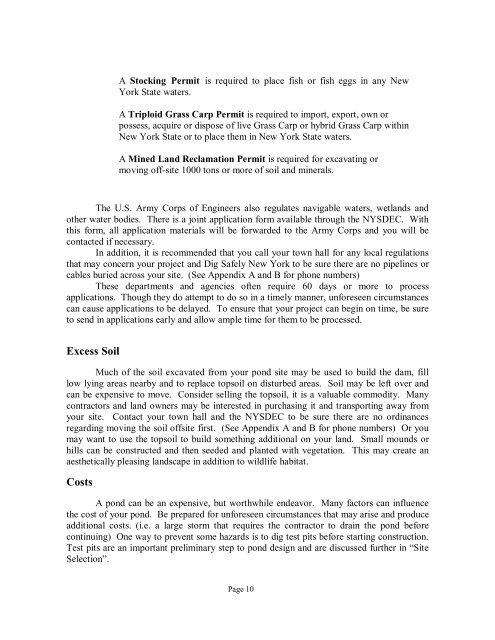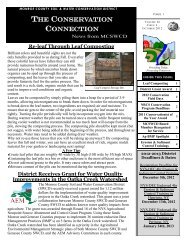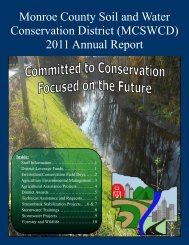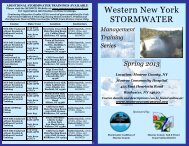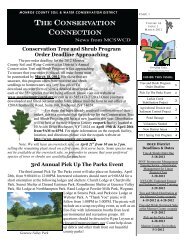Pond Uses, Site Selection, Design, Construction, and Maintenance
Pond Uses, Site Selection, Design, Construction, and Maintenance
Pond Uses, Site Selection, Design, Construction, and Maintenance
You also want an ePaper? Increase the reach of your titles
YUMPU automatically turns print PDFs into web optimized ePapers that Google loves.
A Stocking Permit is required to place fish or fish eggs in any New<br />
York State waters.<br />
A Triploid Grass Carp Permit is required to import, export, own or<br />
possess, acquire or dispose of live Grass Carp or hybrid Grass Carp within<br />
New York State or to place them in New York State waters.<br />
A Mined L<strong>and</strong> Reclamation Permit is required for excavating or<br />
moving off-site 1000 tons or more of soil <strong>and</strong> minerals.<br />
The U.S. Army Corps of Engineers also regulates navigable waters, wetl<strong>and</strong>s <strong>and</strong><br />
other water bodies. There is a joint application form available through the NYSDEC. With<br />
this form, all application materials will be forwarded to the Army Corps <strong>and</strong> you will be<br />
contacted if necessary.<br />
In addition, it is recommended that you call your town hall for any local regulations<br />
that may concern your project <strong>and</strong> Dig Safely New York to be sure there are no pipelines or<br />
cables buried across your site. (See Appendix A <strong>and</strong> B for phone numbers)<br />
These departments <strong>and</strong> agencies often require 60 days or more to process<br />
applications. Though they do attempt to do so in a timely manner, unforeseen circumstances<br />
can cause applications to be delayed. To ensure that your project can begin on time, be sure<br />
to send in applications early <strong>and</strong> allow ample time for them to be processed.<br />
Excess Soil<br />
Much of the soil excavated from your pond site may be used to build the dam, fill<br />
low lying areas nearby <strong>and</strong> to replace topsoil on disturbed areas. Soil may be left over <strong>and</strong><br />
can be expensive to move. Consider selling the topsoil, it is a valuable commodity. Many<br />
contractors <strong>and</strong> l<strong>and</strong> owners may be interested in purchasing it <strong>and</strong> transporting away from<br />
your site. Contact your town hall <strong>and</strong> the NYSDEC to be sure there are no ordinances<br />
regarding moving the soil offsite first. (See Appendix A <strong>and</strong> B for phone numbers) Or you<br />
may want to use the topsoil to build something additional on your l<strong>and</strong>. Small mounds or<br />
hills can be constructed <strong>and</strong> then seeded <strong>and</strong> planted with vegetation. This may create an<br />
aesthetically pleasing l<strong>and</strong>scape in addition to wildlife habitat.<br />
Costs<br />
A pond can be an expensive, but worthwhile endeavor. Many factors can influence<br />
the cost of your pond. Be prepared for unforeseen circumstances that may arise <strong>and</strong> produce<br />
additional costs. (i.e. a large storm that requires the contractor to drain the pond before<br />
continuing) One way to prevent some hazards is to dig test pits before starting construction.<br />
Test pits are an important preliminary step to pond design <strong>and</strong> are discussed further in “<strong>Site</strong><br />
<strong>Selection</strong>”.<br />
Page 10


